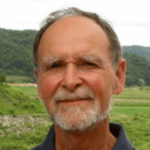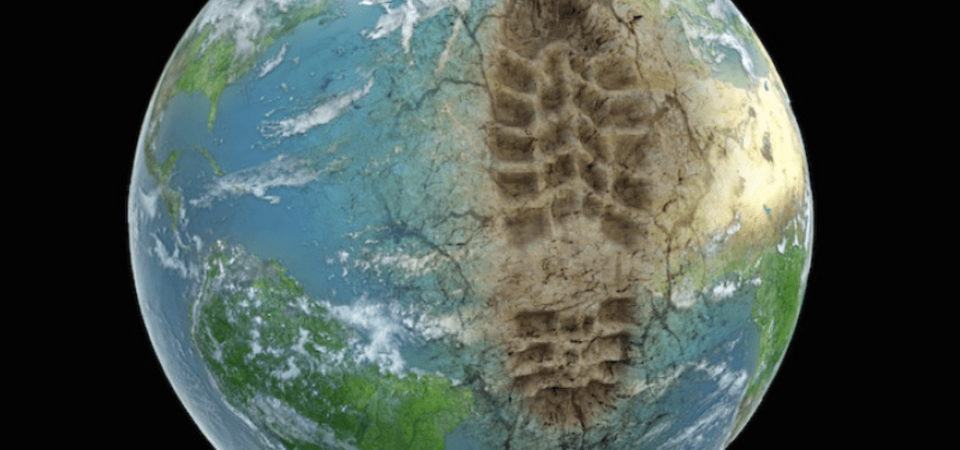File: Download
Year of Publication: 2020
Publisher: The Millennium Alliance for Humanity and the Biosphere
Author(s): Michael Kalton
Synopsis
“Anthropocene,” a candidate term for this epoch of the earth’s geologic history, also signals a decisive and critical transition in human history. These two belong to time scales so different it is difficult to frame them together: The earth is about 4.5 billion years old and has hosted life for about 3.8 billion of those. Civilization is only 8 thousand years old, a vanishingly brief period in geologic time. Yet during that geologic eye blink human civilization has suddenly become a geologic descriptor, key to comprehending the transformed character of the earth and of its entire community of life. This is the Anthropocene, a geologic moment of uncertain duration in which the energetic and life-giving flows of the sun-bathed globe bear the unmistakable imprint of our way of life.
In the final analysis, an Anthropocene that will endure requires a civilization that finds a fitness with the earth. Fitness is a layered question. It belongs first to bio-evolution, then to human civilization and cultural evolution. What does it mean for any organism to be alive, to make a living? What sort of evolutionary probe leads to sentience, learning from experience, symbolic communication? How, after 2.8 million years of human existence—200 thousand for homo sapiens—did civilization in a mere 8 thousand years take us across a threshold into the Anthropocene, an era where the world that made us has been transformed into a world which we make. How did we ever get peeled off from the rest of the system into this “management” role in the first place, and what does it mean for the natural system that it has somehow done this to itself by giving rise to us?
Addressing such questions lays the foundation for a closer analysis of major transitions in the evolution of civilization that have contributed to shaping the extraordinary positive feedback dynamics that characterize the multi-faceted exponentiality of the “Great Acceleration” (c. 1950-present). Science and technology in a profit-driven market economy unwittingly extended our weight in the functioning of the earth and the biosphere to the point where the self-organizing dynamics of the natural world are now overtaken and shaped by the world of culture, which is constructed by the very different organizing dynamic of human consciousness. The strained fit between these two now over-laid dynamics give us an Anthropocene featuring global climate change and the Sixth Mass Extinction as its unhappy hallmarks. Science, however, now also gives us a better grasp of the consequences of our behavior in deeper reaches of space and time. If we can find the means to appropriately expand the factors that now constrict our caring and prioritizing to a narrow and short-term horizon, we have the knowledge we need to shape our actions to accord with a viable future.
This book is divided into two parts. Part I traces the nature and roots of systemic tensions between the worlds of culture and of nature that have mounted to critical proportions. Anticipating a period in which the present status quo yields to fluidity and disequilibrium as climate change advances, Part II seeks to identify what sorts of changes/developments might contribute to trajectories that enhance the now challenged fitness of civilization with the earth and the community of life to which we belong. Many books dealing with the Anthropocene, for good reason, are quite dark. I aim to avoid naive optimism, but to offer some realistic grounds for hope, the necessary fuel of meaningful agency.
Download the complete book by clicking on ‘download’ below the image above.
Table of Contents
Prologue 3
- Evolution 7
1.1 Introduction 7
1.2 Emergence of Life: Selves 8
1.3 Working and Not Working: Natural Selection 9
1.4 Making a Living 10
1.5 Big Numbers: Going Anywhere? 11
1.6 Crossing Thresholds 13
1.7 Nested Selves 17
1.8 The Phanerozoic: The Eon of Macroscopic Life 18
1.9 From Hard-Wiring to Conscious Experience 21
1.10 Humans: A New Way of Moving Into the Future 23
- From Constraint to Control: The Emergence of the Anthropocene 25
2.1 Ecosystems: Self-organization Through Mutual Constraint 25
2.1.1 Are Humans Natural? 27
2.2 Language and the Power of Narrative 28
2.3 Becoming Managers of Nature 32
2.3.1 The First 99.5% of Human Life 32
2.3.2 The Next .5% of Human Life 35
2.3.3 Emergence of the Civilized Controlling Mind 40
- The Industrial Revolution 43
3.1 The Ascent and Chastening of Control 44
3.2 The Great Acceleration 48
3.2.2 From Shared Worlds to Plausibility Bubbles 57
- Earth as a Human Managed System 62
4.1 The Mind of Nature: Unconscious Management 63
4.2 The Mind of Humans: Conscious Management 66
- Consciousness in Control 70
5.1 A Stretch for Consciousness 71
5.1.1 Caring 71
5.1.2 Prioritizing 74
5.1.3 Organized Caring and Prioritizing 76
5.2 The Sixth Extinction: Speed Kills 77
5.2.1 The Speed Limit 77
5.2.2 The Efficient Species: Time is Money 78
5.2.3 Science: A New Kind of Future 79
5.2.4 Beyond the Speed Limit 82
- Motivation and Guidance: How do we know where we’re going? 83
6.1 Introduction: Where are We Now? 83
6.2 Life, Well-being as Motive Force 87
6.3 Complexity of “Self” Interest 87
6.4 Managing Interest-Maximizing Dynamics 89
- Mediated Motivation: Technology and Finance 90
7.1 Technology 90
7.2 Money 95
7.2.1 Strange 97
7.2.2 Unpredictable 99
7.2.3 Uncontrollable 101
7.3 Money and Technology: Positive Feedback for More 104
- The Fractious Tendency: Ingroup Outgroup Dynamics 106
8.1 Organic Inside/Outside 107
8.2 Social Inside/Outside 108
8.3 Cosmopolitanism 109
8.4 Tribalism 111
- Summary and Conclusion to Part I 113
Part II. An Ethos for the Anthropocene 115
Introduction 115
- The dynamics of cultural change 117
10.1 The Challenge 122
10.2 Speed Bumps 122
- Taking our Foot off the Gas 126
11.1 Growth 130
11.1.1 Stuff 132
11.1.2 Food 137
11.1.3 Two Opportunities for Change 143
11.2 Money 148
- Changing our Minds and Hearts 152
12.1 Priorities 153
12.2 Short-sightedness 157
12.3 Identity 162
12.4 Carelessness 165
12.5 Consumerism 171
- Religion 179
13.1 Religion and Cultural Stability 179
13.2 Fundamentalism 181
13.2.1 Who are We? 184
13.2.2 Contingency 185
13.3 Mainstream Religion 186
13.4 Spiritual but Not Religious 193
13.4.1 Half a World View 195
13.4.2 Re-rounding a World View 197
- Conclusion: Towards An Anthropocene Ethos 199
Epilogue: Earth Justice 205
 Michael Kalton is emeritus professor and former director of Interdisciplinary Arts and Sciences at the University of Washington, Tacoma. His preparation for interdisciplinary research includes a broad liberal education, with a Bachelors degree in Philosophy and Letters, a Masters degree in Greek, and a Licentiate degree in philosophy. He entered Harvard’s graduate program in East Asian Languages and Civilization in 1970, then combined that program with Comparative Religion for a joint PhD degree from Harvard in East Asian Languages and Civilization and Comparative Religion (1977). Teaching for over 20 years in an interdisciplinary program, his interests expanded first into environmental ethics, and from there into the dynamics of self-organizing systems and social change. In addition to books and papers devoted to East Asia’s Neo-Confucian tradition, he spent five years prior to his work on the Anthropocene coauthoring with George Mobus a major textbook on the formative dynamics and constraints of systemic organization as such. This book, The Principles of System Science (Springer, 2015), prepared for his analysis of the Anthropocene as the emergence of a unique systemic situation, the overlaying of two very different modes of systemic organization as human consciousness has become a major component in global and biosphere function.
Michael Kalton is emeritus professor and former director of Interdisciplinary Arts and Sciences at the University of Washington, Tacoma. His preparation for interdisciplinary research includes a broad liberal education, with a Bachelors degree in Philosophy and Letters, a Masters degree in Greek, and a Licentiate degree in philosophy. He entered Harvard’s graduate program in East Asian Languages and Civilization in 1970, then combined that program with Comparative Religion for a joint PhD degree from Harvard in East Asian Languages and Civilization and Comparative Religion (1977). Teaching for over 20 years in an interdisciplinary program, his interests expanded first into environmental ethics, and from there into the dynamics of self-organizing systems and social change. In addition to books and papers devoted to East Asia’s Neo-Confucian tradition, he spent five years prior to his work on the Anthropocene coauthoring with George Mobus a major textbook on the formative dynamics and constraints of systemic organization as such. This book, The Principles of System Science (Springer, 2015), prepared for his analysis of the Anthropocene as the emergence of a unique systemic situation, the overlaying of two very different modes of systemic organization as human consciousness has become a major component in global and biosphere function.

